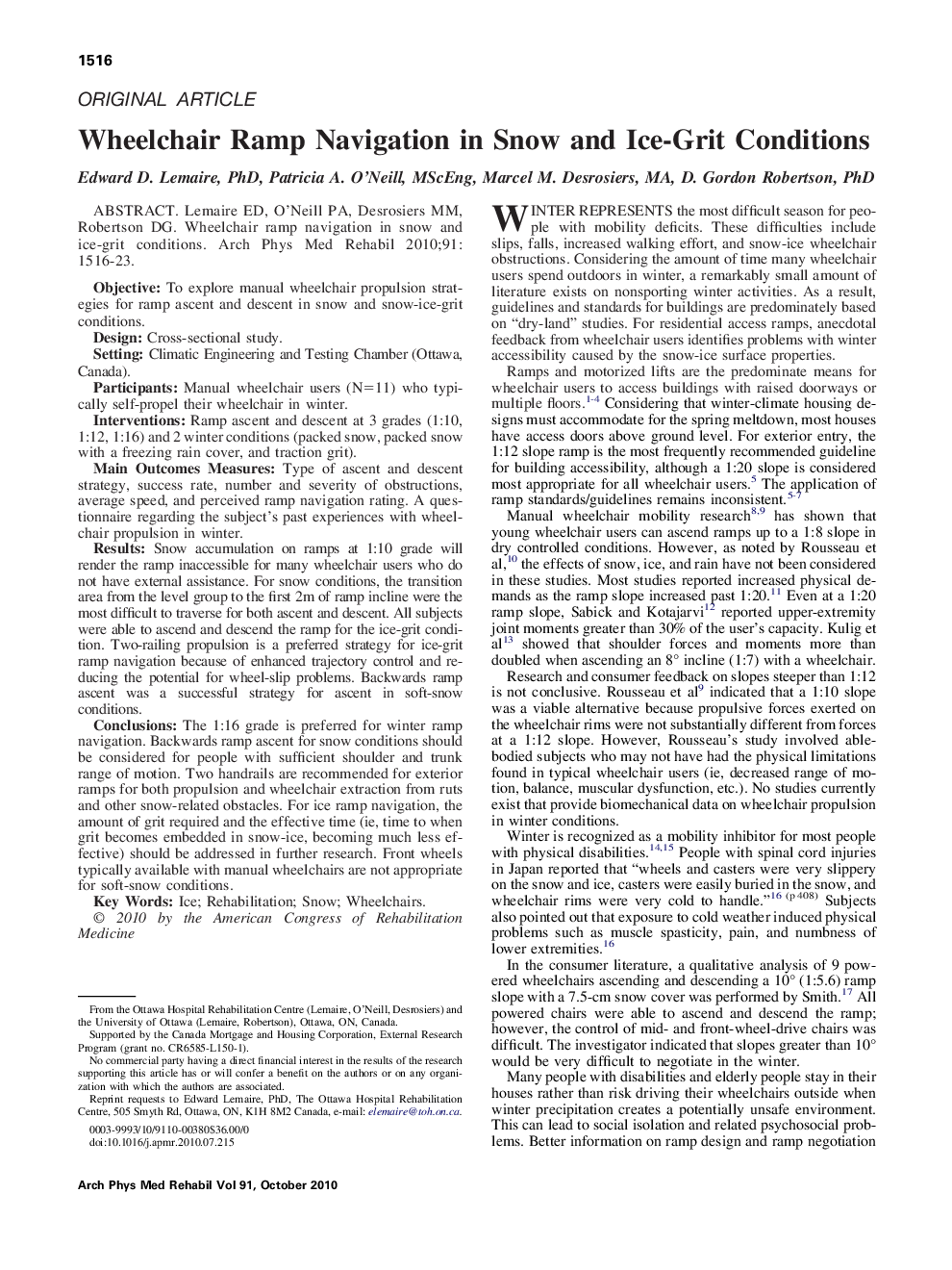| Article ID | Journal | Published Year | Pages | File Type |
|---|---|---|---|---|
| 3450941 | Archives of Physical Medicine and Rehabilitation | 2010 | 8 Pages |
Lemaire ED, O'Neill PA, Desrosiers MM, Robertson DG. Wheelchair ramp navigation in snow and ice-grit conditions.ObjectiveTo explore manual wheelchair propulsion strategies for ramp ascent and descent in snow and snow-ice-grit conditions.DesignCross-sectional study.SettingClimatic Engineering and Testing Chamber (Ottawa, Canada).ParticipantsManual wheelchair users (N=11) who typically self-propel their wheelchair in winter.InterventionsRamp ascent and descent at 3 grades (1:10, 1:12, 1:16) and 2 winter conditions (packed snow, packed snow with a freezing rain cover, and traction grit).Main Outcomes MeasuresType of ascent and descent strategy, success rate, number and severity of obstructions, average speed, and perceived ramp navigation rating. A questionnaire regarding the subject's past experiences with wheelchair propulsion in winter.ResultsSnow accumulation on ramps at 1:10 grade will render the ramp inaccessible for many wheelchair users who do not have external assistance. For snow conditions, the transition area from the level group to the first 2m of ramp incline were the most difficult to traverse for both ascent and descent. All subjects were able to ascend and descend the ramp for the ice-grit condition. Two-railing propulsion is a preferred strategy for ice-grit ramp navigation because of enhanced trajectory control and reducing the potential for wheel-slip problems. Backwards ramp ascent was a successful strategy for ascent in soft-snow conditions.ConclusionsThe 1:16 grade is preferred for winter ramp navigation. Backwards ramp ascent for snow conditions should be considered for people with sufficient shoulder and trunk range of motion. Two handrails are recommended for exterior ramps for both propulsion and wheelchair extraction from ruts and other snow-related obstacles. For ice ramp navigation, the amount of grit required and the effective time (ie, time to when grit becomes embedded in snow-ice, becoming much less effective) should be addressed in further research. Front wheels typically available with manual wheelchairs are not appropriate for soft-snow conditions.
